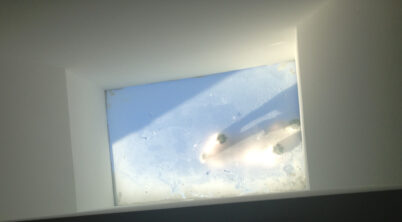Pekingese dogs are renowned for their regal and distinctive appearance, but their luxurious double coats come with an inherent susceptibility to a variety of skin problems. Their thick fur can conceal underlying issues, making it vital for owners to pay close attention to their Pekingese’s skin health. Allergies, hormonal imbalances, stress, and genetics can all be underlying causes of skin conditions in these dogs. Known for being less active and more indoor-oriented, Pekingese may exhibit sensitivities to household allergens and even certain food ingredients.
Maintaining a Pekingese’s overall health often involves a proactive approach to managing their skin care needs. Due to their genetic predisposition, Pekingese can experience frequent itching, discomfort, and infections that not only affect their coat’s appearance but also impact their quality of life. Dermatitis, hot spots, and allergies are just a few issues that can lead to uncomfortable skin conditions. Regular grooming routines and diligent observation for changes in their skin or coat, such as redness, bald spots, or excessive scratching, are essential for early detection and treatment of potential problems.
It is imperative for Pekingese owners to understand the link between skin problems and overall health in these canines. Chronic skin conditions can be indicative of more serious health concerns, ranging from allergic reactions to more complex systemic diseases. Therefore, collaboration with a veterinarian to establish a comprehensive care plan is crucial. A tailored diet, regular check-ups, and timely interventions can minimize the occurrence of skin issues and contribute to the long-term health and comfort of a Pekingese.
Table of Contents
Recognizing Common Skin Problems in Pekingese
Pekingese dogs can suffer from a range of skin problems, often indicated by symptoms like itching or redness. Below are specific conditions known to affect this breed.
Infections and Infestations
Pekingese are susceptible to parasitic infestations such as fleas, ticks, and lice, which can lead to intense itching and subsequent infections. Bacterial and fungal infections are also common, with the latter potentially resulting in conditions like ringworm. Signs of these issues include:
- Excessive scratching
- Patchy hair loss
- Red, inflamed skin
- Presence of fleas or ticks upon examination
Allergies and Inflammation
Allergic reactions in Pekingese often manifest on the skin and can be caused by a variety of allergens, including environmental and food sources. These reactions typically cause:
- Itchy, red skin
- Frequent scratching, licking, and biting at affected areas
- Recurrent ear infections associated with skin allergies
Common indicators of allergic dermatitis include redness and inflammation, and in severe cases, skin may become thickened or discolored.
Structural Skin Issues
The breed’s distinct facial structure and skin folds make them prone to structural skin issues. Their wrinkled skin can trap dirt and moisture, creating an ideal environment for the growth of bacteria and fungi. It is important to keep these areas clean to prevent irritation and infection. Regular grooming is vital to maintain the health of their coat and skin, minimizing the risk of such problems.
Impact of Skin Health on Pekingese Appearance and Behavior
Pekingese dogs are known for their luxurious coats and distinctive appearance, but when faced with skin health issues, both their looks and behaviors can be significantly affected.
Hair Loss and Itchy Skin
Skin health in Pekingese directly influences their appearance, particularly through conditions that cause hair loss and itchy skin. When a dog’s skin becomes irritated and itchy, they may lose hair in spots where they scratch excessively or have allergic reactions. Alopecia—a term for hair loss—can be triggered by allergies, parasites, hormonal imbalances, or stress. It can result in patchy, uneven hair coverage, which detracts from the Pekingese’s normally plush appearance.
Scratching and Hot Spots
Scratching is a Pekingese’s natural response to itchy skin, but excessive scratching can lead to more severe skin issues, such as hot spots. These are areas of particularly inflamed, infected skin that can be painful and are often accompanied by redness and scabs. A Pekingese dog actively scratching at hot spots can cause self-inflicted wounds, which further affect their appearance and well-being. Scratching can also be indicative of underlying problems, such as skin infections or parasites, that require medical attention to prevent escalation.
Treatment Options and Preventive Care
Effective management of Pekingese skin problems requires a combination of veterinary interventions, optimized nutrition, and diligent skincare. The complexity of skin issues demands a structured approach to treatment and prevention to maintain the health and comfort of the Pekingese dog.
Veterinary Interventions
When addressing skin problems in Pekingese, a veterinarian should be the primary contact. They may prescribe medicated shampoos that are designed to treat specific skin conditions like fungal or bacterial infections. Additionally, the vet might recommend allergy testing to identify triggers causing skin irritation and suggest appropriate treatments such as immunotherapy.
- Prescribed treatments:
- Antibacterial or antifungal medicated shampoos
- Immunotherapy following allergy testing
Diet and Supplements
Nutrition plays a pivotal role in skin health. High-quality dog food that is rich in essential nutrients can promote healthy skin and coat. Fatty Acid Supplements, such as omega-3 and omega-6, can be beneficial in reducing skin inflammation and improving overall skin condition.
- Nutritional adjustments:
- Omega-3 and Omega-6 Fatty Acid Supplements
- High-quality, nutrient-rich dog food
Regular Grooming and Skincare
Consistent grooming routines prevent the accumulation of irritants and support skin health. Regular bathing with appropriate products, alongside careful brushing, keeps the Pekingese’s coat clean and minimizes the risk of skin infections. It is vital to avoid over-bathing, which can strip natural oils and exacerbate skin issues.
- Skincare regimen:
- Regular, but not excessive, bathing with suitable shampoos
- Routine brushing to remove debris and spread natural oils
Understanding Predispositions and Breed-Specific Concerns
The Pekingese breed is characterized by its distinctive physical features that contribute to certain skin conditions. Flat faces and wrinkled skin can lead to skin issues, as the skin folds create a warm and moist environment ideal for the growth of bacteria and fungi.
- Flat Face: This trait can cause difficulty in grooming, leading to dirt and oils accumulating, which may exacerbate skin problems.
- Wrinkled Skin: The creases may trap debris and moisture, increasing the risk of skin infections.
Trichiasis, or the inward growth of eyelashes, due to their facial structure, often irritates the eyes, leading to excessive tearing that can moisten the surrounding skin and contribute to skin irritations.
Keratoconjunctivitis Sicca (KCS), also known as dry eye, can be somewhat prevalent in this breed. Decreased tear production can lead to corneal dryness and secondary skin issues around the eyes.
Listed below are two orthopedic conditions, although not directly skin-related, that can indirectly impact skin health:
- Patellar Luxation: Dislocation of the kneecap, likely to cause discomfort, may lead to increased licking of the joint area, potentially causing skin irritation.
- Arthritis: Joint pain can result in similar licking behaviors as above, with the same potential outcome on skin health.
Careful, regular examination of a Pekingese’s skin and effective grooming practices are instrumental in the prevention and management of breed-specific skin issues. Owners should be proactive in maintaining a Pekingese’s coat and fold hygiene to mitigate these predispositions.
The Importance of Consulting Dermatologists and Veterinarians
When Pekingese dogs exhibit symptoms such as excessive scratching, hair loss, and red, scaly skin, it’s crucial for owners to seek professional advice. Veterinarians and dermatologists specialize in identifying and treating a range of health concerns, ensuring accurate diagnosis and effective management.
Dermatologists possess in-depth knowledge about skin conditions and can assess whether a Pekingese’s skin issues are due to allergies, fungal infections, or other causes. These specialists are also adept at dealing with complex cases, such as pyoderma—a bacterial skin infection that requires specific antibiotic treatments.
Veterinarians offer a broader scope of care, addressing not just skin problems but also related health issues like ear infections. Often, skin and ear problems are interconnected, and a veterinarian’s comprehensive approach can lead to a more thorough treatment plan. They provide essential care from first signs of distress to recovery, which includes:
- Diagnosis: Utilizing their expertise to identify the root cause of skin irritations.
- Treatment: Prescribing medication or recommending dietary changes.
- Prevention: Advising on proper grooming and care to minimize future skin concerns.
Regular consultations with both veterinarians and dermatologists are important in preventing potential exacerbation of skin conditions. Their intervention can alleviate discomfort promptly and prevent minor problems from developing into serious health issues, thereby improving the overall wellbeing of Pekingese dogs.
* Banner photo by AtomicMonster, cropped | Some rights reserved








